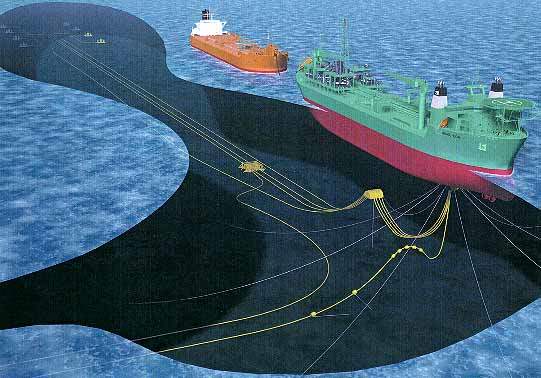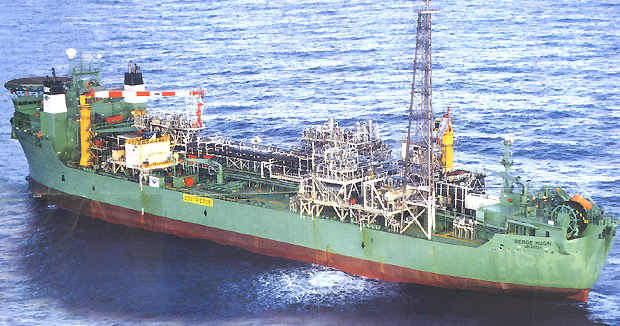Pierce lies in blocks 23/22a and 23/27, 280km east of Aberdeen. The field comprises two accumulations: Pierce North (formerly Medan) and Pierce South (formerly Pierce).
Reserves
Prior to the field coming on-stream, the estimated recoverable reserves were upgraded to 100 million barrels of oil and 202 billion cubic feet of gas.
This translates into a field production life of five to 13 years. Pierce is made up of cone-shaped salt diapir reservoirs.
Exploration
Blocks 23/22a and 23/27 were awarded licenses in the third UK licensing round. Pierce was discovered in 1975, when the semisubmersible Sedneth 701, drilling for Ranger Oil, tested 3,000b/d of 40° API crude and 1.95 million cubic feet a day of gas from the Palaeocene sands reservoir with its well 23/27-3.
Production
In mid-1996, Ranger took the decision to carry out an extended well test using the rig JW McLean. This produced a total of 1.17 million barrels of oil during the test at an average production rate of 15,000 barrels a day, although rates of up to 20,000 barrels a day were recorded.
At this point, Pierce was declared commercially viable, with reserves standing at a rate of 40 million barrels of oil, excluding gas. By the end of 1996, BP, the field operator with a 46% equity, was awarded the front-end engineering design (FEED) contract for Pierce.
The following year, Enterprise purchased BP’s 42.8% stake in Pierce to become the operator. In return, BP took over Enterprise’s interests in Ravenspurn North and in Amethyst.
Development
The original Pierce plan required the drilling of six producers and two injectors. The wells were drilled by the Ocean Guardian.
Drilling was characterised by very long horizontal sections of the wells within excess of 6,000ft in the reservoir. The B2 well has a 6,400ft reservoir section.
Drilling
The development of the field was based on Navion’s 103,000t double-hull multi-shuttle tanker (MST) Berge Hugin. The Berge Hugin is an oceangoing single-screw tanker, with diesel-electric propulsion. It is enhanced with an extensive dynamic positioning (DP) capability.
Two electrically driven side thrusters, each of 2,000kW, with controllable pitch propeller (CPP) are installed in the bow. Two 3,000kW retractable azimuth thrusters are located in front of the pump room.
Vessel
The vessel is propelled by two variable-speed electric propulsion motors on the same shaft. This motor is connected to a fixed-pitch propeller.
The hull is designed with the main engine room and accommodation in front, and the cargo / ballast pump room and the engine room housing the electric propulsion motors aft.
The cargo tank section consists of 18 cargo tanks, plus two slop tanks with a total cargo capacity of 101,400m³.
All cargo tanks are protected by a double bottom and ballast tank at the sides. There are two longitudinal bulkheads in the cargo section, with one centre-tank and two side-tanks of equal breadths.
The ship is provided with a pump room for cargo and ballast pumps located at the aft end of the cargo section. The living quarters are located at the front of the vessel. Electricity is provided by four 5,200kW Wartsila 6R46A engines and one Wartsila 9R20 engine, with a generator output of 1,100kW.
The Berge Hugin has a 45,000b/d process facility. It can inject gas at a rate of 100 million cubic feet a day and is moored using the submerged turret production system, held on the seabed by suction anchors.
Export will be via shuttle tankers, also leased from Statoil, while produced gas will be reinjected.
The Berge Hugin entered the Aker McNulty yard, on the Tyne, to be equipped with the Pierce process packages. It left there in late 1998.
Statoil was contracted to lease this to Enterprise for a period of five to 13 years at a cost of approximately £100m.






